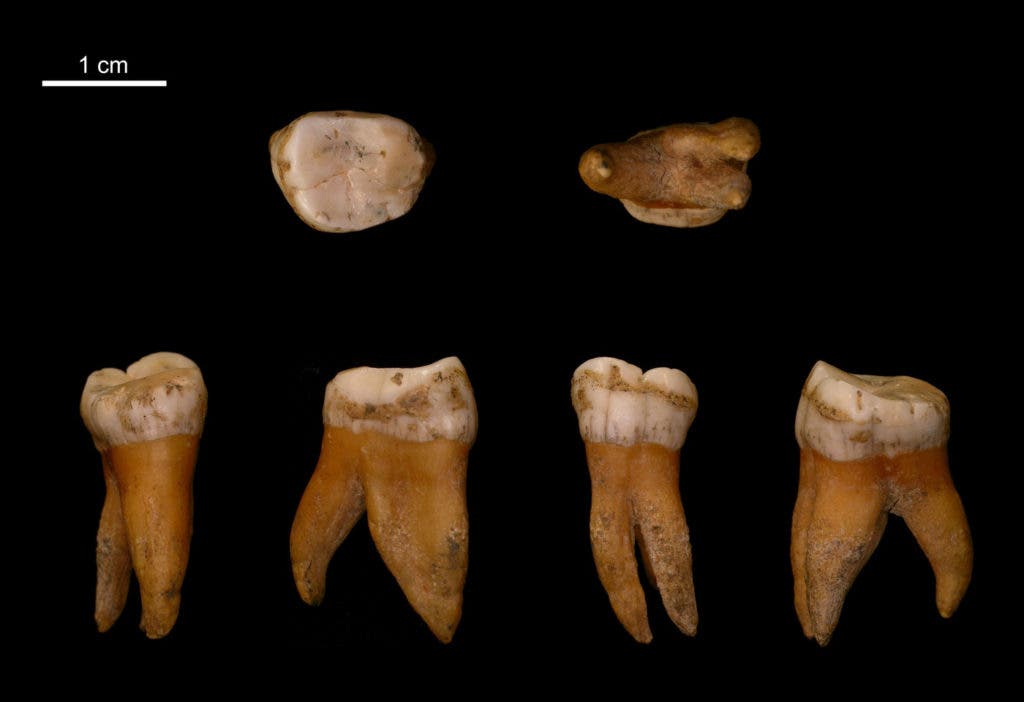
After scientists sequenced the first Neanderthal genome, we were surprised to learn that our extinct cousins actually interbred with modern humans. It’s believed all non-Subsaharan individuals alive today carry about 2% Neanderthal DNA. But our Neanderthal ancestry might be even richer than we thought: five new Neanderthal genomes sourced from Belgium, France, Croatia, and Russia have been recently sequenced. This effectively doubles the number of genomes available.
The samples were taken from bones and teeth, ground into a fine powder, and treated with a mild hypochlorite solution to remove any contaminants. All the new genomes are 39,000 to 47,000 years old, which makes them latecomers in the species’ history.
“Our work demonstrates that the generation of genome sequences from a large number of archaic human individuals is now technically feasible, and opens the possibility to study Neandertal populations across their temporal and geographical range”, says Janet Kelso, the senior author of the new study.
After the researchers at the Max Planck Institute for Evolutionary Anthropology analyzed the five Neanderthals, they compared them to previously sequenced Neanderthals (whole-genome sequencing was available for only four Neanderthal individuals prior to this study), but also a Denisovan, and samples from our own species.

They found that the five individuals shared a common ancestor about 150,000 years ago with another Neanderthal individual whose remains were recovered from a Siberian cave. According to the researchers, they can now identify 10 to 20 percent more Neanderthal DNA in people living today than it was possible when everything scientists had at their disposal was the Altai Neanderthal genome, the first Neanderthal genome to be sequenced.
Very curiously, none of these individuals had any modern human DNA contained their genomes, despite having shared the same timeline. This suggests that the gene flow may have been strictly unidirectional — from Neanderthals to humans, but not the other way around. It’s not clear whether the gene flow comes from male or female Neanderthals, so there are still open questions concerning the intimate dynamic between the two species.
It also seems that these late Neanderthals were more related to the Neanderthals that mated with the ancestors of modern-day Europeans and Asians than the older Neanderthal populations found in Siberia.
For thousands of years, the Mezmaiskaya Cave, laying near the border between Russia and Georgia in the Caucasus mountains, had offered Neanderthals shelter. The newly extracted genetic information allowed the researchers to compare two individuals who had lived approximately 20,000 years apart. To the researchers’ surprise, the two individuals were not closely related.
Instead of both being distantly related to Western European Neanderthals, the team found that the younger Neanderthal was more genetically similar to Croatian, Belgian, and French Neanderthals than to the older Neanderthal found at the cave. This suggests that the more recent individual was part of a new population that replaced the former ones, which were likely wiped out. The authors believed that “extreme cold periods in northern Europe may have triggered the local extinction of Neanderthal populations.” Eventually this population, too, collapsed with the extinction of its own species — only to be replaced by our own.
“We see that the genetic similarity between these Neandertals is well-correlated with their geographical location. By comparing these genomes to the genome of an older Neandertal from the Caucasus we show that Neandertal populations seem to have moved and replaced each other towards the end of their history”, says first author, Mateja Hajdinjak.
The findings appeared in the journal Nature.






